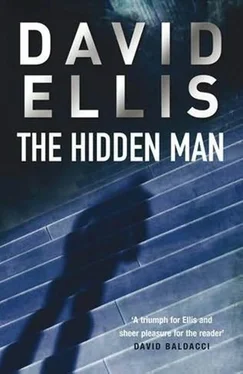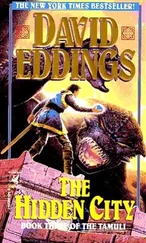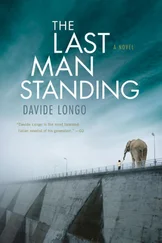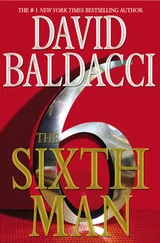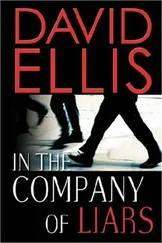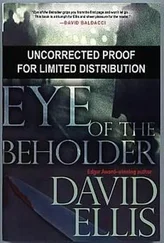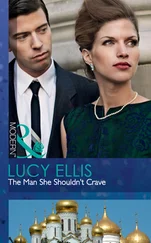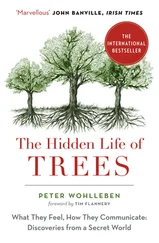He chuckled to himself. He didn’t think much of me, and he didn’t mind displaying that sentiment.
“Audrey Cutler was my neighbor,” I said. “A really sweet little girl. I have some reason to believe that maybe Griffin Perlini didn’t kill her. If he didn’t, I need to find out who did. She deserves some justice, don’t you think?”
“Justice. Justice.” He lost his smile. He had a weathered face that had seen a lot more than I had, and he didn’t betray very much. I sensed that he had a profound sense of justice himself. I just didn’t know what it looked like, and I hoped I never would.
“In the not-so-distant past,” he said, “a prosecutor who went by the name of Jason Kolarich convicted a man named Walter Tucker for first-degree murder.”
I thought about that a moment. “A shopping mall,” I recalled. “A Tenth Street ticket.” Walter Tucker, for his initiation into the Tenth Street Crew, had shot a teenager outside a shopping mall for committing the crime of trying to leave the gang.
“I knew the family,” he said. “Good people.”
I didn’t answer. This wasn’t a game I could win.
“You remember George Ryder handled the defense. He offered involuntary and twenty. But Jason Kolarich turned it down and went to trial with one pair of eyes and a shaky gun.”
And I won. But I knew his thoughts without him saying them: A white boy ID’s a colored kid, of course the jury’s going to convict. I heard it all the time. And I wasn’t sure I disagreed, not all the time, at least. But I didn’t prosecute a case if I wasn’t sure the guy was guilty. It made life simple for me.
“George said you were fair, though. Tough as hell but fair.” He brought a fist to his mouth and let out a nasty cough. It seemed to move him off topic. “Okay, Jason Kolarich, tell me their theory. Those smart cops out there in Area Two with the missing girl, Audrey Cutler.”
I felt like a student now, but okay, I’d play along. “Perlini nabbed Audrey Cutler from her bedroom, a snatch and run. He went to his house or his car, had his fun with her, killed her, and disposed of the body.”
He leaned back in his chair and cupped his hands behind his head. “Snatch and run. Snatch,” he repeated, “and run .”
His emphasis on that last word finally triggered it in my mind, finally scratched that mental itch. My body went cold. I felt my hand rise up to hood my eyes.
“Ah,” said Lionel. “Did the cops do their homework, Jason Kolarich?”
A moan escaped my throat. No, in fact, they hadn’t.
“But you did, right, Counselor?”
Yes, I did. But then, my homework was over twenty years later, and after Griffin Perlini was dead. So when I’d had the conversation with Griffin Perlini’s mother, Griffin was not facing a first-degree murder charge, when everyone shuts their mouths and prays that the police can’t put one and one together and get two. In fact, when Mrs. Perlini had told me that Griffin had torn the anterior cruciate ligament behind his knee a few years earlier-before Audrey’s abduction-it was nothing more than an introduction to a story.
“Griffin had a torn ACL,” I said. “He couldn’t run.”
“No more than I could do a triple axle off the high dive,” said Reggie Lionel.
IWALKED BACK from Reggie Lionel’s office in a trance, every assumption I’d made in the case now turned upside down. I’d had teammates who had torn their ACLs and, while it was not a universal rule, it was typically the case that a full tear of the ACL, unless surgically repaired, left you able to walk but unable to run. Perlini’s mother had told me that they didn’t have the money for surgical repair. The police, when investigating Perlini for Audrey’s abduction, surely didn’t put him through wind sprints. They’d have no reason to know of his inability to run. Reggie Lionel, wisely, had held his client back from revealing this fact to the police, because there was always time to do it, and most likely that time would have been in a courtroom, while he stood trial.
Lionel, back then, had played it smart. Wait out the cops, see if they can put something together, hold back your trump card in case you need it. He just never needed it, because the cops couldn’t pin the rap on his client.
Mrs. Thomas had described the man running as very fast. It was impossible to imagine that Griffin Perlini could have pulled that off.
Griffin Perlini didn’t kill Audrey. The notorious Mr. Smith’s client, I was now sure, did.
Smith wasn’t worried so much about delay as he was about me figuring out this very fact. He hadn’t jumped to attention until the bodies were discovered. That was their concern. That was when they framed Pete to get control over me.
It was not lost on me that this revelation did some violence to my attempt to free Sammy Cutler. I’d hoped to show the jury that Sammy killed the man who killed his sister. If the jury knew that Perlini didn’t kill Audrey, Sammy’s murder looked a lot less justifiable.
But I couldn’t let this go. I might not be able to solve this crime in a short time frame, but I would solve it. I would find Smith and I would find his client. I would find Audrey’s killer.
Smith. I’d taken a gamble and filed the motion for expedited DNA testing-or a delay of Sammy’s trial until testing could be completed-to rattle the tree, to force Smith’s hand, to see if it might prompt him to make a move that would expose himself to me. He would have a counter, I knew, some effort to tighten the noose, but I was getting to the end of the line and I had no good leads on Smith, or his client, with less than three weeks to go until Sammy’s trial.
If I was right that Smith and company were covering up Audrey’s murder, and perhaps multiple child murders, the clock was ticking loudly for Pete and me. Once Sammy’s trial was over, and they had no use for me, they’d come after both of us to cover their tracks. I had seventeen days to solve this thing before there would be a contract out on both of our heads.
What else could I do? I had forced Smith into a corner now by asking the court for DNA testing. I was trying out a plan on Detective Denny DePrizio, though it probably wasn’t going to help Sammy. What else could I do?
Solve Sammy’s case, for starters. I had two leads on alternative suspects now. Smith had given me Ken Sanders, the black-guy-fleeing-the-scene. And I had to follow up on the alibi of another potential suspect, Archie Novotny, who claimed he was at a guitar lesson on the night Griffin Perlini was murdered.
THE MUSIC EMPORIUM, located on 39th and Greenway, was a relic in this day and age, full of rows of albums and CDs in an era where nobody had a turntable anymore and most young people were buying music online. It was a cramped, musty, dark place with music posters for wallpaper, where the only conditions of employment seemed to be wearing your hair past your shoulders and sporting hallucinogenic imagery on your T-shirt.
I actually appreciated the place. We’ve become too impersonal nowadays, buying and reading everything through a computer. I still liked to hold a newspaper in my hand. I still preferred flipping through CDs in a store. I did so while I waited, going through some old Smiths music. This place had a pretty good collection. I bought a used copy of Strangeways, Here We Come because I’d lost mine, and a CD single of “The Queen Is Dead,” which I still thought was their best song.
“Morrissey. Good taste.”
I turned around as the clerk was ringing up my purchase to find the guy who I assumed was Nick Trillo. Archie Novotny had given me his name; this was his guitar teacher who could vouch for him. I hadn’t formed a predictive image of the man in my mind, but in hindsight, he was about what I should have expected. He was skinny to a fault but with a minor paunch, a scatter-patch goatee, gray hair pulled back into a long ponytail.
Читать дальше
